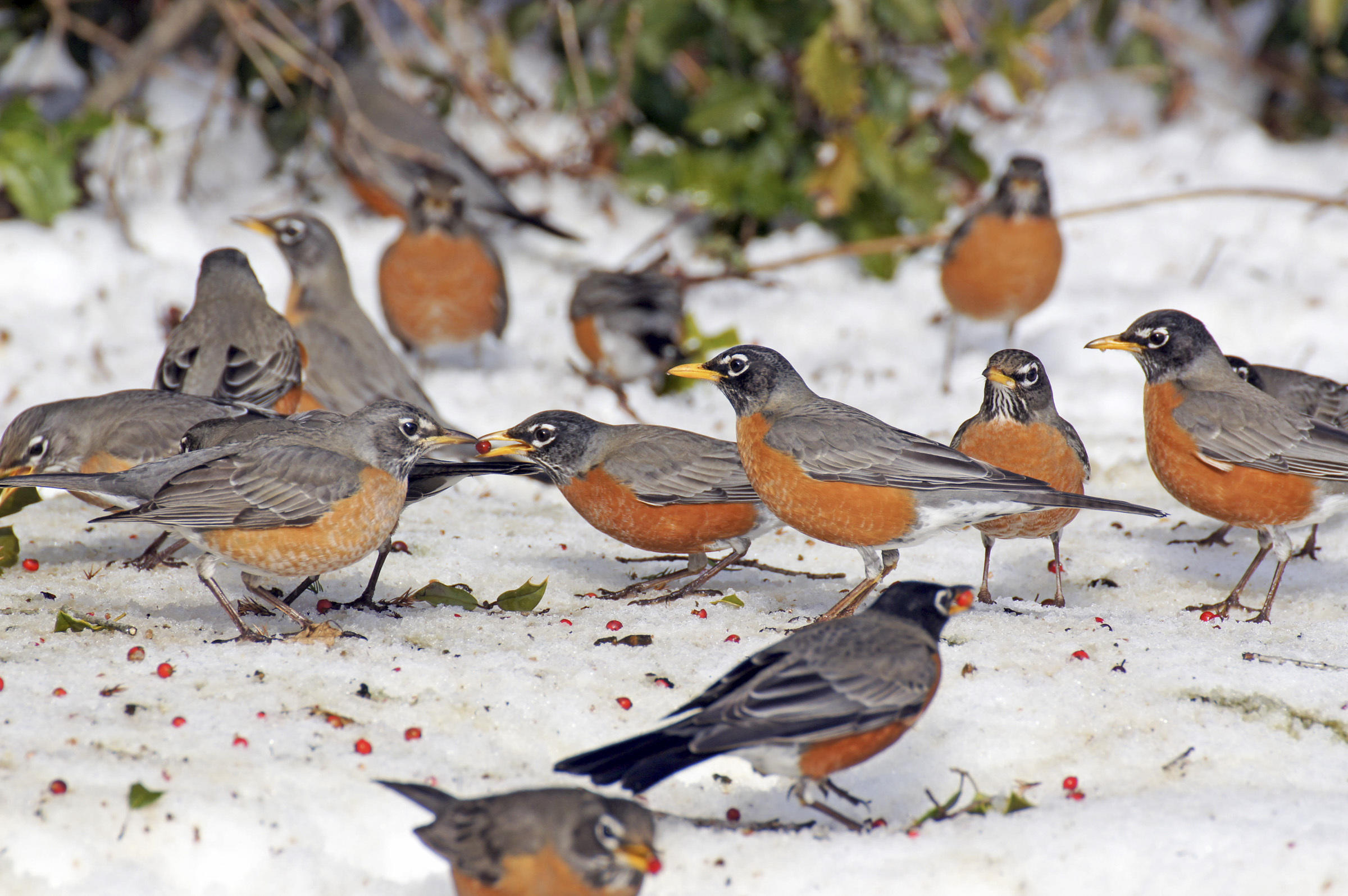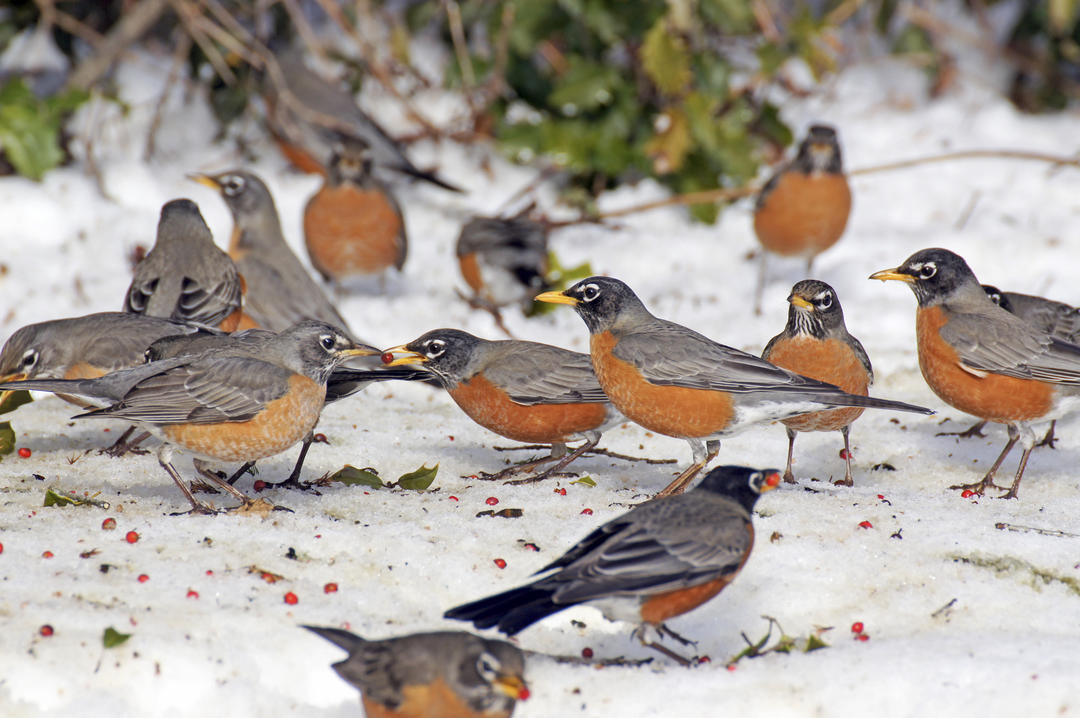March in Vermont is known for its high degree of weather variability. Consider that at the beginning of the month the ground was bare throughout much of the state. Temperatures were flirting with 60 degrees, the maple sap was running, and birds were singing. Some of the earliest arriving migratory birds had returned; Red-winged Blackbirds and American Robins seemed particularly rambunctious. Vermont eBird also shows that the first Yellow-rumped Warblers and Hermit Thrushes had also started showing up in some parts of the state. Today we're cleaning up from the third nor’easter in the past three weeks, with the potential for a fourth next week. What does all this mean for those early arriving birds?
Different Types of Migrants
Migratory birds can be divided into 2 main categories: short-distance and long-distance. Short-distance migrants have at least some of their wintering population remain in the US over the winter. The long-distance migrants generally see the majority, if not all, of their winter populations travel to Central America, Mexico, the Caribbean, or South America.
Short-distance migrants respond to regional weather variations by moving either earlier or later toward their breeding grounds. This is likely the reason that some species (such as American Robins and Red-winged Blackbirds) started appearing earlier than typical. The weather was good and the earlier males can get onto the breeding grounds, the better chance they have in setting up a territory in the best available habitat.
On the other hand, long-distance migrants have no idea what the weather conditions are like up here in New England when they start their journey. The timing of their migration is based on changes in day length and its effects on the birds' hormones. This makes it highly unlikely that we would see a species such as a Scarlet Tanager show up in March or even April.
So Now What?
If you’re one of those early-arriving migrant birds and get hit with 2 feet of snow what do you do?
Some, like our American Robins, are likely to tough it out. They continue to search for food such as staghorn sumac berries still holding on from last year or patrol the edges of open streams in search of recently emerged winter stoneflies. It won’t necessarily be easy to survive, but many will likely make it through.
Others, such as the American Woodcock, may brave the conditions and search for patches of bare earth that they can probe for worms and other macro-invertebrates. Their other option is to move out of the area in search of more hospitable weather conditions. A quick "spring break" before they get back to their breeding territory and get down to business.
Keep in mind that this is not the first time these birds have experienced these types of conditions. They are adaptable and hopefully are able to hold on just a bit longer. Astronomical spring begins on March 20!
Explore more Migration
In celebration of the Year of the Bird, National Geographic has developed a spectacular, interactive map of seven different bird species with seven different migratory strategies. Roughly half of the world’s bird species migrate. Out of that multitude, these seven illustrate the variety of paths that birds can take during migration in the Western Hemisphere—evoking the waves of birds that flow over and around us with each passing season. Explore the maps online.












